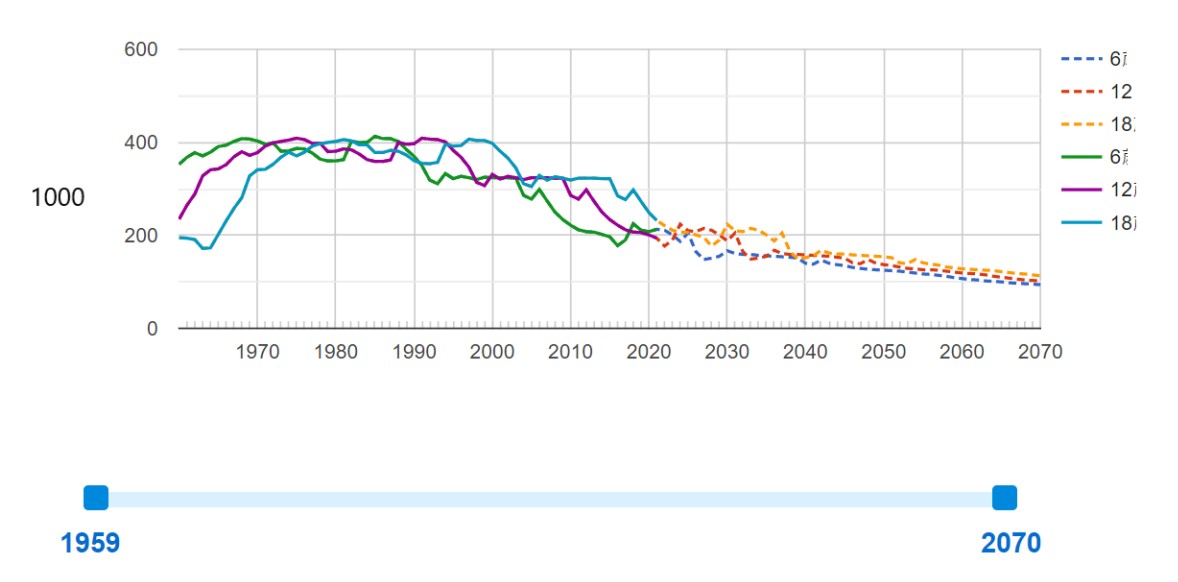One Solution for Good? Systematic Analysis of Industrial Human Resource Supply Chain: Study on the Educational Dilemma and Countermeasures of Declining Birth Rate in Taiwan
Main Article Content
บทคัดย่อ
This study uses the concept of system analysis to explore the problem of industrial human supply chain, and conducts policy research on Taiwan's educational industry. Since the industrial human supply chain is an overall social issue, it is related not only to social welfare and employment policies, but also the consequences of educational policies. Therefore, this research can make concrete contributions to both
industrial development and educational plans. This research mainly explores the following questions: 1) What is the relationship between the human resource supply chain and the education industry? 2) What measures can the government take in the face of insufficient human resource supply? 3) Is there a good policy that can take into account the industry development and education industry supply chain? In response to the above problems, this study adopts the research method of systematic analysis, and puts the current situation of the educational industry and the industrial domain into the same system for analysis, and therefore systematically compares the policies proposed by the government and other feasible solutions. This research conducts research on the policies adopted by Taiwan in the past three years regarding human resource shortages, and present comparative results.The results of this study point out that (1) the educational industry and enterprises should be inseparable, so the content of education should meet the needs of the industry. (2) The government is the most important role that affects the development of the industry, and the government has the responsibility to make good policies. (3) The work-study program that takes into account the needs of the educational industry and enterprises, and the introduction of international mobile students and employment populations is a good solution help to meet the needs of industries and employment in various countries.
Article Details

อนุญาตภายใต้เงื่อนไข Creative Commons Attribution-NonCommercial-NoDerivatives 4.0 International License.
บทความนี้ได้รับการเผยแพร่ภายใต้สัญญาอนุญาต Creative Commons Attribution-NonCommercial-NoDerivatives 4.0 International (CC BY-NC-ND 4.0) ซึ่งอนุญาตให้ผู้อื่นสามารถแชร์บทความได้โดยให้เครดิตผู้เขียนและห้ามนำไปใช้เพื่อการค้าหรือดัดแปลง หากต้องการใช้งานซ้ำในลักษณะอื่น ๆ หรือการเผยแพร่ซ้ำ จำเป็นต้องได้รับอนุญาตจากวารสารเอกสารอ้างอิง
Chen, X. (2016). Opinion submission: How to respond to the exit mechanism of higher education under the low birth rate. Retrieved from https://www.storm.mg/article/192798?mode=whole
Chen, Z. (2021). Taiwan faces 3 major crises that may shake the nation's capital MediaTek director Tsai Ming-jie urges government to pay attention. Mirrormedia. Retrieved from https://www.mirrormedia.mg/story/20210723fin008/
Cheng, Q. (2015). Be careful! Population Gap is coming!. Retrieved from https://group.dailyview.tw/article/detail/672
Gao, Y., & Chen, H. (2015). The crisis of low birthrate that shakes the country. Zen World (125), 35-35.
Lai, W. (2013). The collapse of Taiwan's technical and vocational education must rely on four solutions. Today Weekly. Retrieved from https://www.businesstoday.com.tw/article/category/80392/post/201302280038/%E5%8F%B0%E7%81%A3%E6%8A%80%E8%81%B7%E6%95%99%E8%82%B2%E5%B4%A9%E5%A3%9E%20%E6%8C%BD%E6%95%91%E9%A0%88%E9%9D%A0%E5%9B%9B%E5%A4%A7%E8%A7%A3%E6%96%B9
Ministry of Education. (2014a). Five-year 50 billion project. Retrieved from https://pedia.cloud.edu.tw/Entry/WikiContent?title=%E4%BA%94%E5%B9%B4%E4%BA%94%E7%99%BE%E5%84%84%E5%B0%88%E6%A1%88&search=%E4%BA%94%E5%B9%B4%E4%BA%94%E7%99%BE%E5%84%84%E5%B0%88%E6%A1%88
Ministry of Education. (2014b). Precautions for the protection of students' rights to education in colleges and above. Retrieved from https://edu.law.moe.gov.tw/LawContent.aspx?id=GL001366
Ministry of Education. (2017). “Regulations on the Exit of Private Senior Secondary Schools and Above” (Draft). Retrieved from https://www.edu.tw/News_Content.aspx?n=9E7AC85F1954DDA8&s=8093671DC5BD2104
Pan Naixin. (2021a). After 4 years, the exit regulations are still stuck. United Daily News. Retrieved from https://udn.com/news/story/6898/5895717
Pan Naixin. (2021b). Teaching quality inspection such as police raids on private school teachers: Infringing on the freedom of teaching may be unconstitutional. Lianhe Daily. Retrieved from https://udn.com/news/story/6885/5372285
Shiokawa ,T. (2006). Low birthrate and educational problems - Is educational reform the cause of low birthrate?. Taiwan Education (640), 21-25. doi: 10.6395/ter.200608.0021
Taiwan Labor Front. (2021). The beauty and sadness of Taiwan's technical and vocational education. Retrieved from https://labor.ngo.tw/labor-events/events-activities/1108-20211119
Wang, J. (2012). Educational problems and countermeasures of low birthrate. Taiwan Education Review Monthly, 1(5), 38-43.
Wu, S. (2020). Vocational students have dropped by nearly 100,000 in 10 years, UST has become a general university, the second army, and the decline of technical jobs "black hands become masters" may no longer be seen. Retrieved from https://www.storm.mg/article/2577430?page=1
Xu, Z. (2012). Teachers in light vocational and higher education are worried about the academicization of technical vocational. Retrieved from https://www.taiwannews.com.tw/ch/news/2069608
Yang, J. (2013). The face of schools under the impact of low birthrate. Taiwan Education (681), 35-37.
Zeng, R., Zhang, W., & Guo, Z. (2009). Analysis of the low birthrate on the management pressure and coping strategies of technical colleges. Journal of Educational Research and Development, 5(3), 175-208


